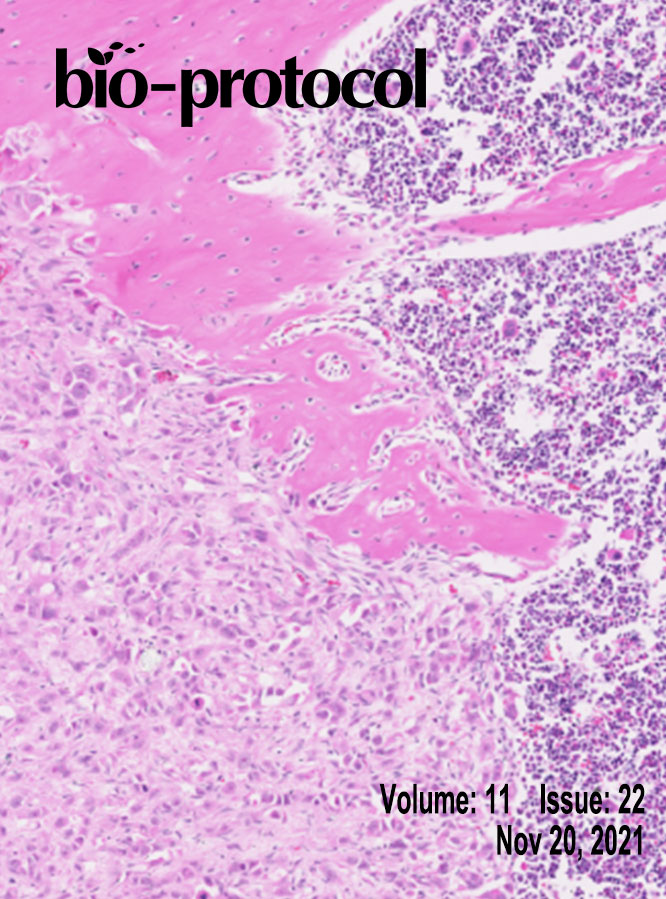往期刊物2021
卷册: 11, 期号: 22
生物物理学
Macroscopic Structural and Connectome Mapping of the Mouse Brain Using Diffusion Magnetic Resonance Imaging
利用弥散磁共振成像绘制小鼠大脑的宏观结构和连接组图
Cortical Laminar Recording of Multi-unit Response to Distal Forelimb Electrical Stimulation in Rats
大鼠前肢远端电刺激的多单位反应的皮层层析记录
癌症生物学
Measurement of Bone Metastatic Tumor Growth by a Tibial Tumorigenesis Assay
用胫骨肿瘤发生法测定骨转移瘤的生长
Measurement of DNA Damage Using the Neutral Comet Assay in Cultured Cells
在培养细胞中使用中性彗星试验测量 DNA 损伤
细胞生物学
Live Imaging of Apoptotic Extrusion and Quantification of Apical Extrusion in Epithelial Cells
上皮细胞凋亡挤压的活体成像和根尖挤压的定量分析
Pericyte Mapping in Cerebral Slices with the Far-red Fluorophore TO-PRO-3
用远红荧光体TO-PRO-3绘制大脑切片中的周细胞地图
Gamete Fusion Assay in Mice
小鼠配子融合分析
发育生物学
Isolation of Primary Leydig Cells from Murine Testis
从小鼠睾丸中分离出原发性睾丸间质细胞
Wholemount in situ Hybridization for Spatial-temporal Visualization of Gene Expression in Early Post-implantation Mouse Embryos
全座原位杂交技术对植入后早期小鼠胚胎中基因表达的时空可视化
免疫学
CD45 Immunohistochemistry in Mouse Kidney
小鼠肾脏中的 CD45 免疫组织化学
微生物学
Analysis of Protein Stability by Synthesis Shutoff
通过合成关闭分析蛋白质稳定性
神经科学
Visual-stimuli Four-arm Maze test to Assess Cognition and Vision in Mice
视觉刺激四臂迷宫测试评估小鼠的认知和视觉
Knockoff: Druggable Cleavage of Membrane Proteins
Knockoff:膜蛋白的药物裂解
植物科学
Preparation and Transfection of Populus tomentosa Mesophyll Protoplasts
杨树中间叶原生质体的制备和转染
Imaging of Lipid Uptake in Arabidopsis Seedlings Utilizing Fluorescent Lipids and Confocal Microscopy
利用荧光脂质和共聚焦显微镜对拟南芥幼苗的脂质摄取进行成像
干细胞
Isolation of CD31+ Bone Marrow Endothelial Cells (BMECs) from Mice
从小鼠中分离 CD31+ 骨髓内皮细胞 (BMECs)



